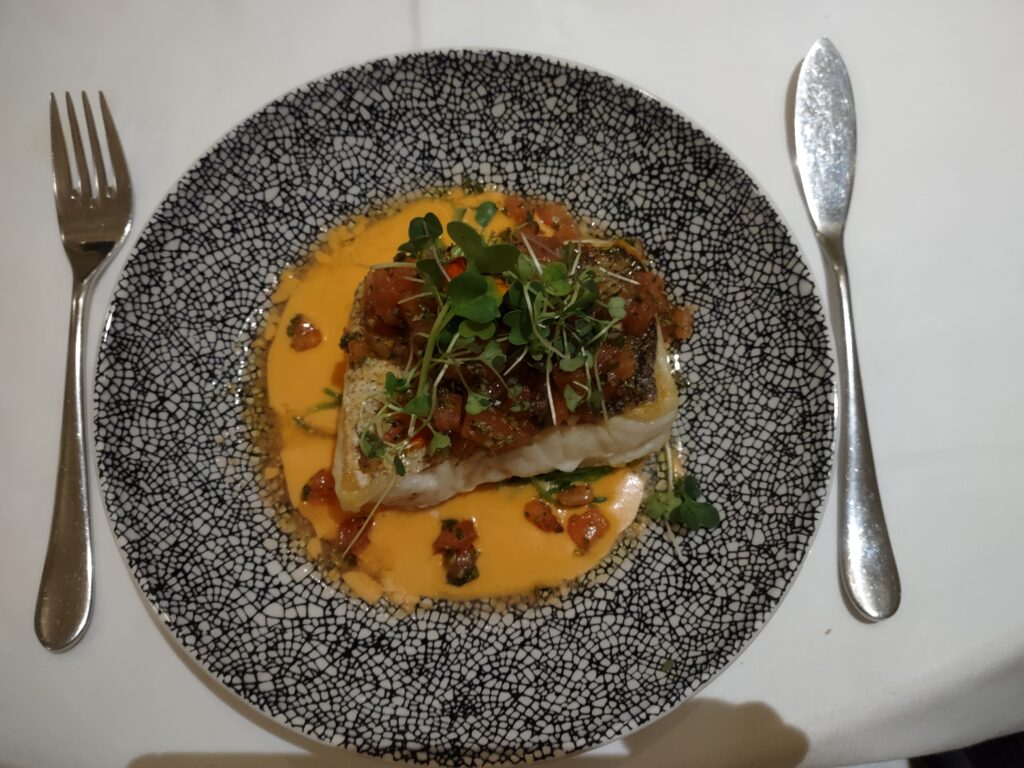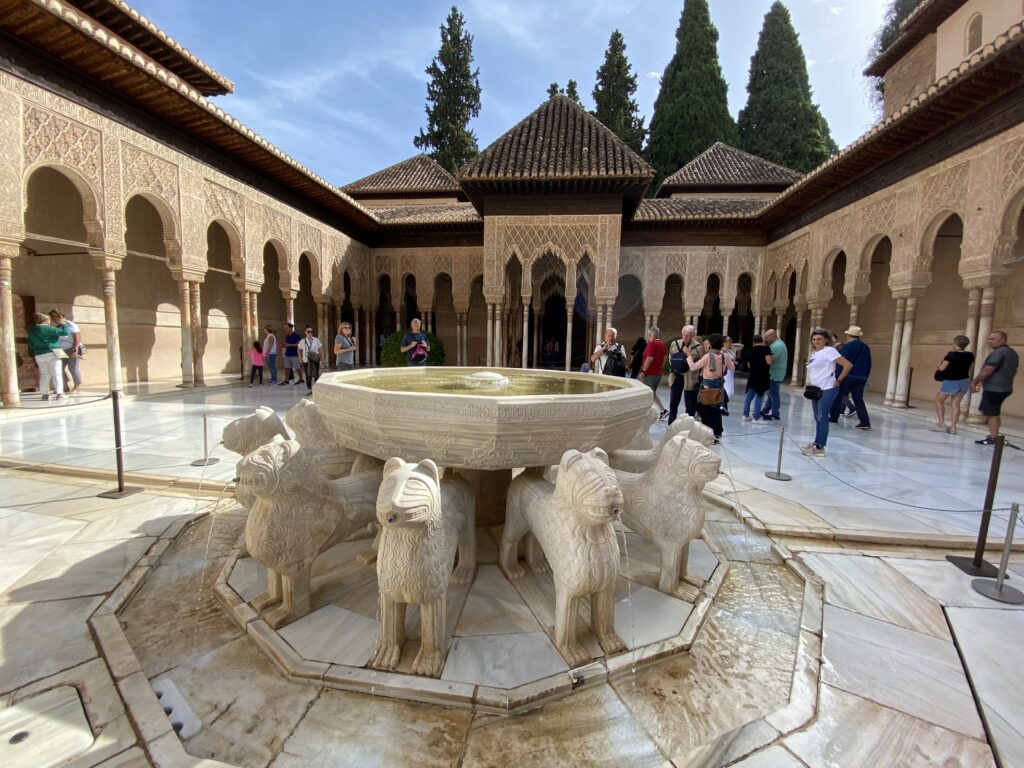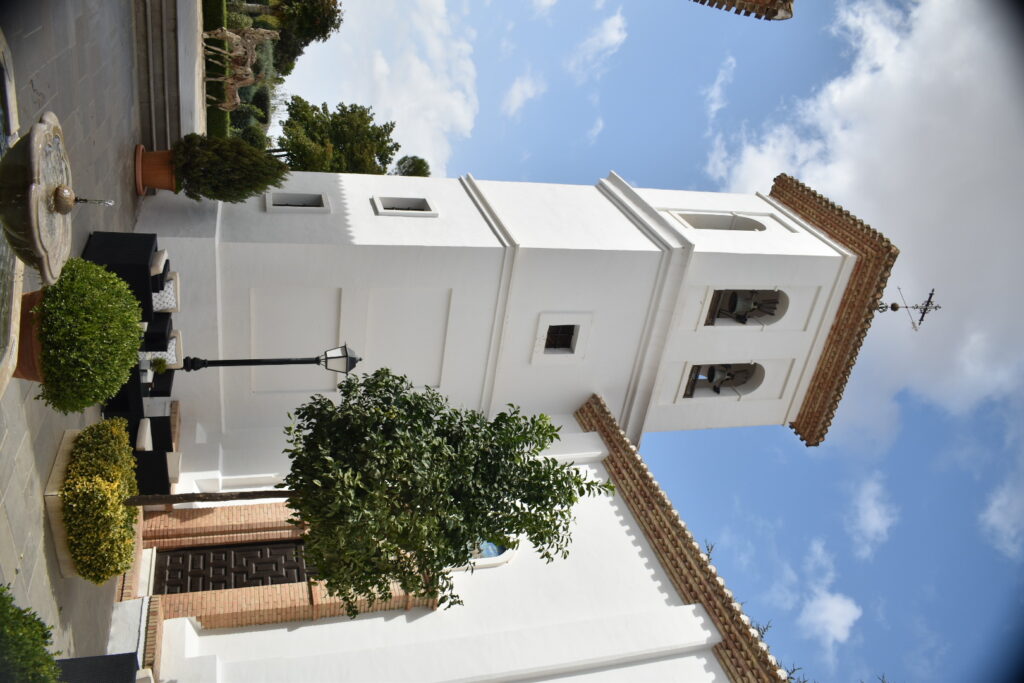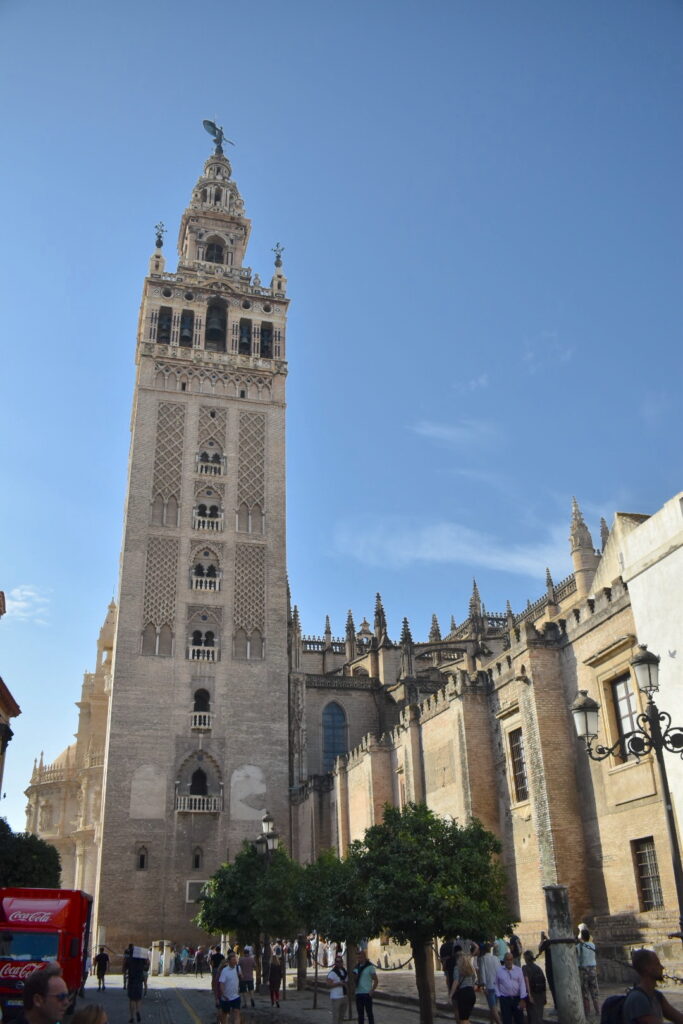By Aida Levitan, Ph.D.
The Levitan Group, Inc.

First Two Days in Madrid
A “legendary” city is not just famous or legendary; indeed, it is a model worth imitating. Madrid, Granada and Seville deserve this designation. They are not only essential for understanding the history of Spain and Europe, but also, as tourist and quality-of-life destinations, they are models worthy of imitation.
With a fairly safe health situation, Madrid seems to vibrate with millions of tourists who take advantage of the fact that the euro is almost on a par with the dollar to enjoy magnificent attractions, hotels, restaurants and shops. We stayed at the emblematic Westin Palace, inaugurated by King Alfonso XIII in 1912 to provide Madrid with a large luxury hotel. Located in the old Palace of the Dukes of Medinaceli, the hotel is in the “Barrio de las Letras,” where legendary writers such as Cervantes and Lope de Vega lived. Just steps from museums, boutiques, bars, and cultural centers, this luxurious hotel offers spacious rooms with individual air conditioning, marble bathrooms, and an excellent restaurant under a spectacular Art Nouveau-style glass dome. It also has rooms for the physically disabled and a very attentive service staff. The buffet breakfasts under the dome are abundant and varied. Our delicious dinner at La Rotonda included leek soup, scallops, fish, and cream and red fruit millefeuille.

In the nearby Prado Museum, we were delighted with extraordinary works by Velázquez, Goya, El Greco, Rubens, Hieronymus Bosch, and other great artists, as well as exhibitions (“Spanish Artists Naples at the beginning of the Cinquecento” and “The Marquis of Santillana: Images and letters”). The Reina Sofía Museum exhibits masterpieces such as Picasso’s “Guernica,” Braque’s “Playing Cards and Dice”, “The Open Window” and “The Musician’s Table” by Juan Gris, “The Comb of the Wind” by Eduardo Chillida, among many more. The “Picasso/Chanel” exhibition at the Thyssen-Bornemisza Museum explores the relationship between these two great creative geniuses. The Thyssen collection includes works by Rembrandt, Bronzino, Van Gogh, Zurbarán, Ribera, Schiele, and Lucian Freud.
The historic Plaza Mayor, remodeled in 1560 by Juan de Herrera, has been the scene of bullfights, autos-da-fe, public executions and even the center of the Christmas market and festivals. In its center is the equestrian statue of Felipe III, by Juan de Bologna and Pietro Tacca (1616). Among the ten entrances to the square, the most famous is the Arco de Cuchilleros, the exit to visit bars and restaurants in the Cava de San Miguel, where the Mercado de San Miguel is located. Our favorite restaurant is Casa Lucio, with tapas like scrambled eggs with Iberico ham, delicious dishes like roast suckling pig, and desserts like almond cake. Near the Plaza Mayor is the Puerta del Sol, where we tried a cake at La Mallorquina and the unbeatable fritters at Casa Labra.
Near the hotel, the Bar Cantábrico served us fresh anchovies with avocado and an Ibérico Torta, with abundant and excellent ham, for very moderate prices. In Dis Tinto, very close, we savor tapas such as “liquid croquettes” and homemade ones, and a red tuna tartare. We had a very good dinner at El Recuerdo, with delicious croquettes and foie shavings, veal tenderloin, and Bilbao style bream.

After visiting the Sorolla Museum, with the original atmosphere of the house and workshop of the painter Joaquín Sorolla and seeing the rich collection of his works, we stroll through the small streets full of boutiques and luxurious apartments in the Salamanca district. That night we crowned our visit to Madrid with a magnificent dinner at the Mandarin Oriental Ritz restaurant. The legendary and renovated Ritz, opened in 1910 by King Alfonso XIII, has been renovated. The tasting (a veritable feast) at the Palm Court included red curry croquettes, oven roasted aubergine, Guggenheim oyster, Wellington sirloin, chocolate mousse with praline dust, and an unforgettable flan. The rooms (between $1,000 and $8,000 euros per night) seemed to us to be of incomparable luxury.
Third Day in Granada
Victor Hugo said that “Granada is the most precious treasure of Spain, a pantry of flavors, smells and passion.” And Hemingway stated: “If we had to visit only one city in Spain, it should be Granada.” The city is legendary for several reasons. The Catholic Monarchs put an end to almost nine centuries of Muslim pre-eminence in the peninsula by conquering Granada in 1492. This triumph was extremely important not only in Spain but also for Rome and Europe, and thus Isabel and Ferdinand became the Catholic Monarchs.
We took the early AVE train directly to Granada and stayed for one night at the Alhambra Palace, inaugurated in 1905 by the Duke of San Pedro de Galatino. It is very popular for its location near the Alhambra Palace, its “Galatea orange” color and its neo-Nazari style interior, as well as the terrace with a spectacular view.
Granada is legendary not only for this conquest, but also for the Alhambra Palace, inspiration for Washington Irving’s “Tales of the Alhambra.” It is an imposing and beautiful castle that was a military fortress and royal residence in the mid-13 century. Between the 13 and the 15 centuries it was transformed into a citadel with high walls, with the military zone or Alcazaba, and the medina, where the famous Nasrid Palaces and the houses of nobles and commoners are located. The Alhambra, home to the Sultan and his court for centuries, and the Generalife, are among the Seven Wonders of the Muslim World and are UNESCO World Heritage Sites. Ada García, from Turismo de Granada, helped us appreciate in detail the splendor of the Nasrid Palaces and the exuberant Generalife gardens. The palaces feature rooms with intricate mosaic tile walls, delicate plaster reliefs and coffered ceilings, connected by gleaming marble courtyards with bubbling fountains and beautiful gardens.

In the afternoon we visited the summer residence of the family of the poet Federico García Lorca, Huerta de San Vicente, to better understand his “poetry factory,” where there are works by his friend Salvador Dalí. The guide María José Merlo offered us anecdotes about her life and death. Later, with the Arabist Antonio Vega, we visit the Albaicín, which keeps the narrow streets of the Moorish medieval times. We admire the beautiful Cathedral, in Renaissance, Plateresque and Baroque styles, and the Gothic Royal Chapel, where the tombs of the Catholic Monarchs, and also of Juana la Loca and Felipe el Hermoso, are located. Going up Mirador de San Nicolás, we had the best view of the Alhambra and the Sierra Nevada. That night, in the Venta del Gallo cave, Sacromonte, we enjoyed a great flamenco show.

If you have another day, Turismo de Granada recommends a visit to the caviar fish farm in Riofrío. This is the only certified organic caviar and it is delicious. You can also stay a couple of nights at the fabulous five-star Hotel La Bobadilla, whose elegant rooms are uniquely designed, and with historical names such as Alhambra, Boabdil and García Lorca. Make sure to enjoy lunch or dinner at the El Cortijo restaurant, with organic caviar, champagne, presa with vegetables, and chocolate fritters with the wonderful sheep’s milk ice cream.

Fourth and Fifth Days in Seville

Seville is legendary for its historic cultural and tourist attractions, its Holy Week celebrations and the April Fair, and also for the joy that characterizes the Sevillians. We stayed in the classic Hotel Inglaterra, in a “Deluxe” room, with air conditioning, free Internet and other services. Only 250 yards from the cathedral, the Giralda, the Archives of the Indies, the Alcázar of Seville, this hotel has an ideal location, in the Plaza Nueva (in front of the City Hall and close to Sierpes and Zaragoza, shops and restaurants). The service is pleasant and attentive and we had a very good dinner at Seis, the hotel restaurant, with Tacos al Gambon and pasta with oxtail.
We took the AVE train to Seville in the early morning. Turismo de Sevilla took us to the incomparable Cathedral, the largest Gothic temple in the world. It has 10 doors, and the oldest, that of Forgiveness, is the only one that remains from the old Almohad mosque. The cathedral impresses not only for its dimensions but also for its rich artistic heritage, with masterful paintings, the polychrome High Altarpiece, the Tomb of Christopher Columbus, the Patio de los Naranjos, and its legendary bell tower, the Giralda.

The set of the Cathedral, the Royal Alcázar and the Archive of the Indies is a UNESCO World Heritage Site. The marvelous Real Alcázar has Renaissance, Mannerist and Baroque as well as Islamic elements. In its Admiral room there are major paintings. The Hall of Ambassadors is the most luxurious place in the palace. The gardens are very old and preserve Muslim elements in the design, with fountains, tiles and orange trees.
After strolling through the charming Barrio de Santa Cruz, the old Jewish quarter, which is a maze of white houses, narrow streets and attractive squares, we ate dinner at the famous Taberna del Alabardero and visited the Flamenco Dance Museum to see the show “Sueños Flamencos.”
On the fifth day we visited Casa Pilatos, where we admired the Andalusian palace of Italian Renaissance and Mudejar styles, residence of the Dukes of Medinaceli. It dates from 1483, when Pedro Enríquez de Quiñones (IV Adelantado Mayor of Andalusia) and his wife Doña Catalina began its construction. His children and grandchildren expanded and completed the decoration of the House, which has 150 different tiles from the 1530s.
We had lunch at Pan y Circo, a restaurant that combines art and gastronomy, with modern culinary confections. We visit the beautiful Palace of Lebrija, from the 16th century. In 1901 Dª Regla Manjón Mergelina, Countess of Lebrija, bought and restored it. The ground floor displays art treasures, including Roman mosaics, archaeological pieces from various eras, and beautiful Roman mosaics that cover 6,000 square feet of walls and floors.
Madrid, Granada and Seville are beautiful cities with a legendary history and incomparable cultural and tourist attractions. In addition, due to their lifestyle, they are ideal cities to visit or live in.
For additional information, please visit:
 Five Day Travel.Com
Five Day Travel.Com